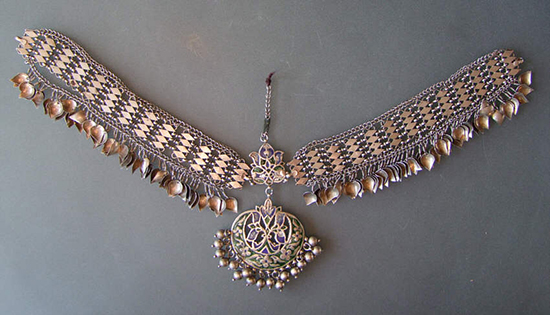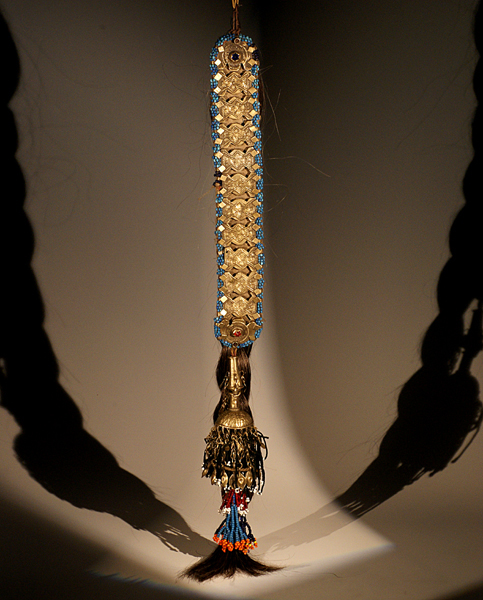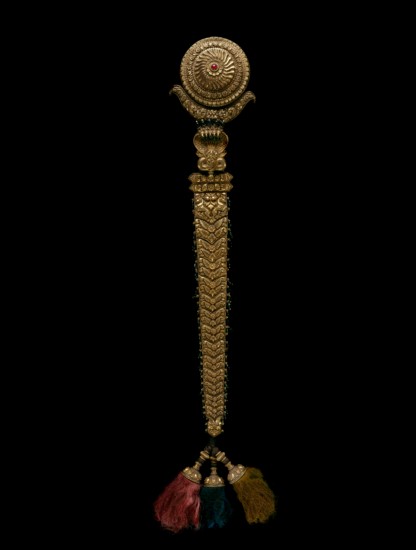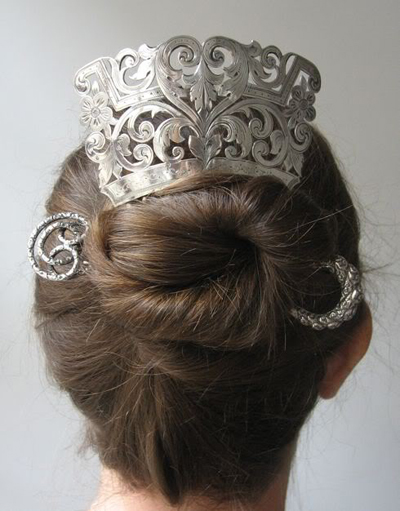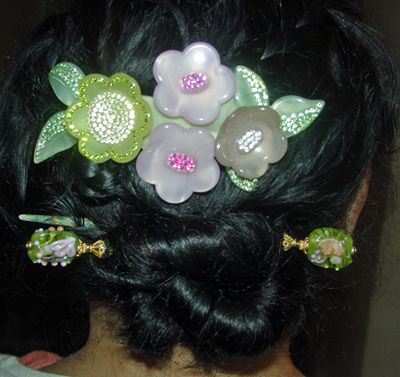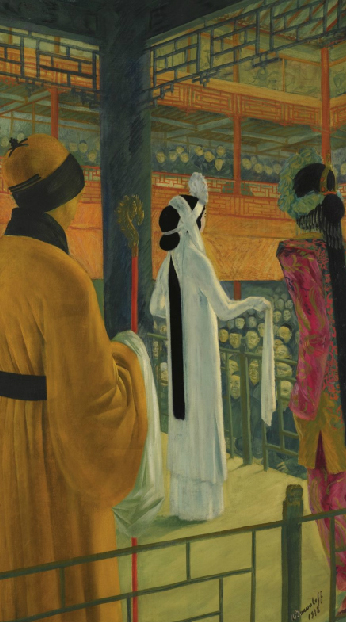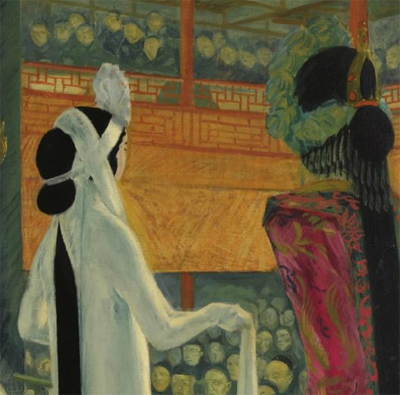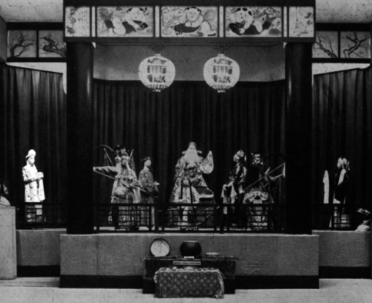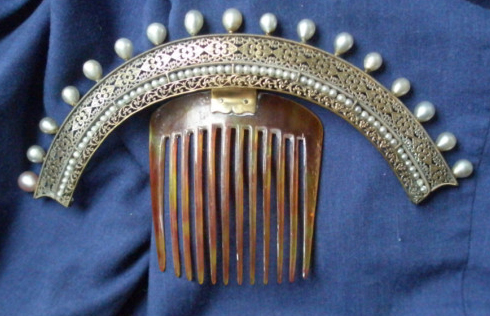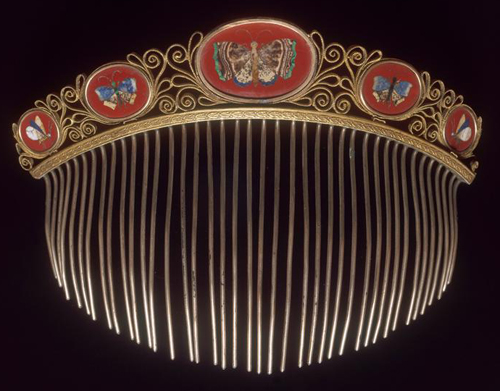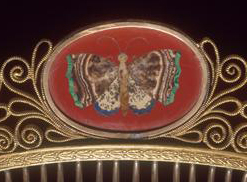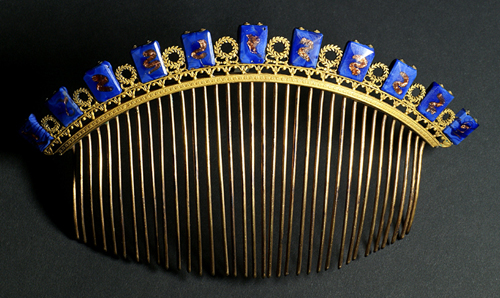Just as an accent can reveal a person’s origin, so a perfume (attar) can identify an Indian rural village. Each village has its unique mixture of oils from native plants, such as jasmine, patchouli, rose, and sandalwood. Connecting scent to beauty is a signature of Indian culture. These combs held oil to perfume the hair. Here are a few examples:
The owner would pour oil in the red-stoned knobs on each edge of this gold comb, which is owned by the Museum of Fine Arts in Houston. Two lions sit back to back with upward curling tails, breathing foliage.

Our author Kajetan Fiedorowicz collected this silver beauty. In a most unusual H shape, oil caps reside on each side. A prince’s profile adorns the front.

Our final stop is The Creative Museum. Here, two birds bookend an oil cap in the middle, with a small bas-relief decoration underneath. This comb was made for a woman’s dowry and comes from the Punjab region of Northwestern India.

The Creative Museum also has a bas-relief comb depicting one goddess dressing the hair of another, which gives us an idea of how Indian artists combined function (holding oil), engineering (the cap and space in the comb to hold the oil), and art in both the comb and in real life.

कंघी
For more scholarly research, you may examine
Courtly Culture and Political Life in Early Medieval India
The bird comb with the bas-relief pattern shown in this post is available on E-bay for $900 or best offer.

